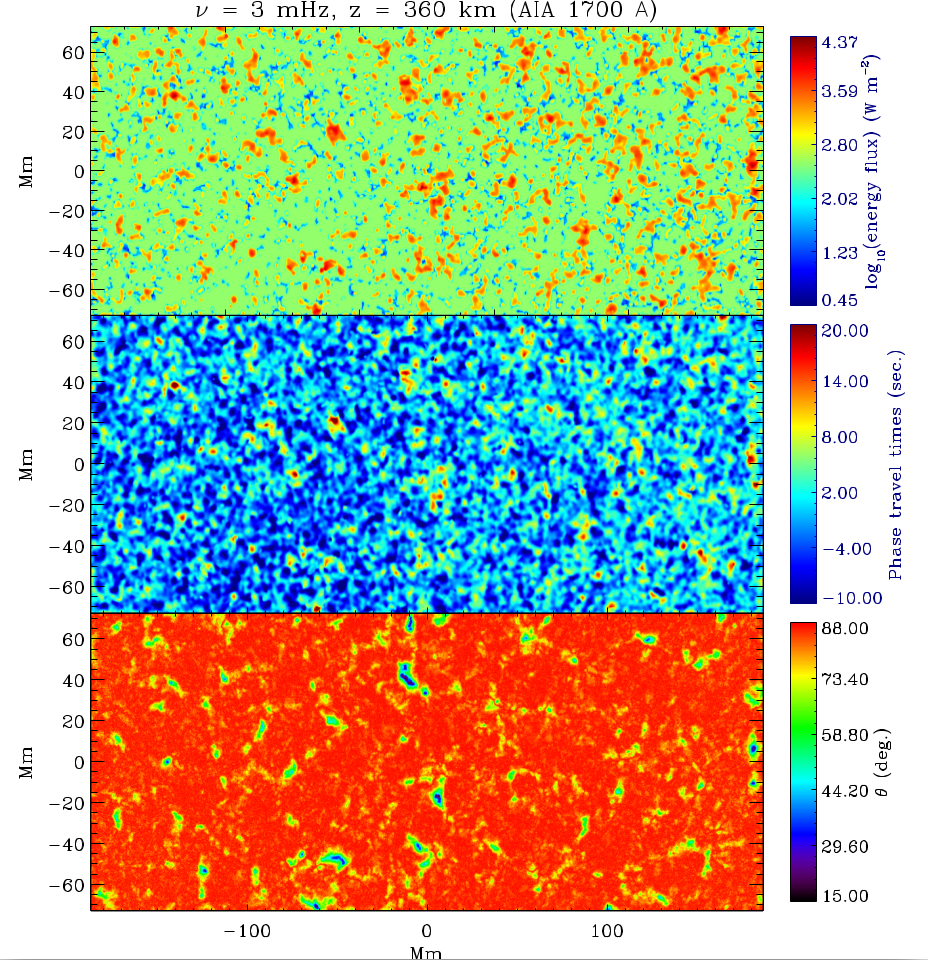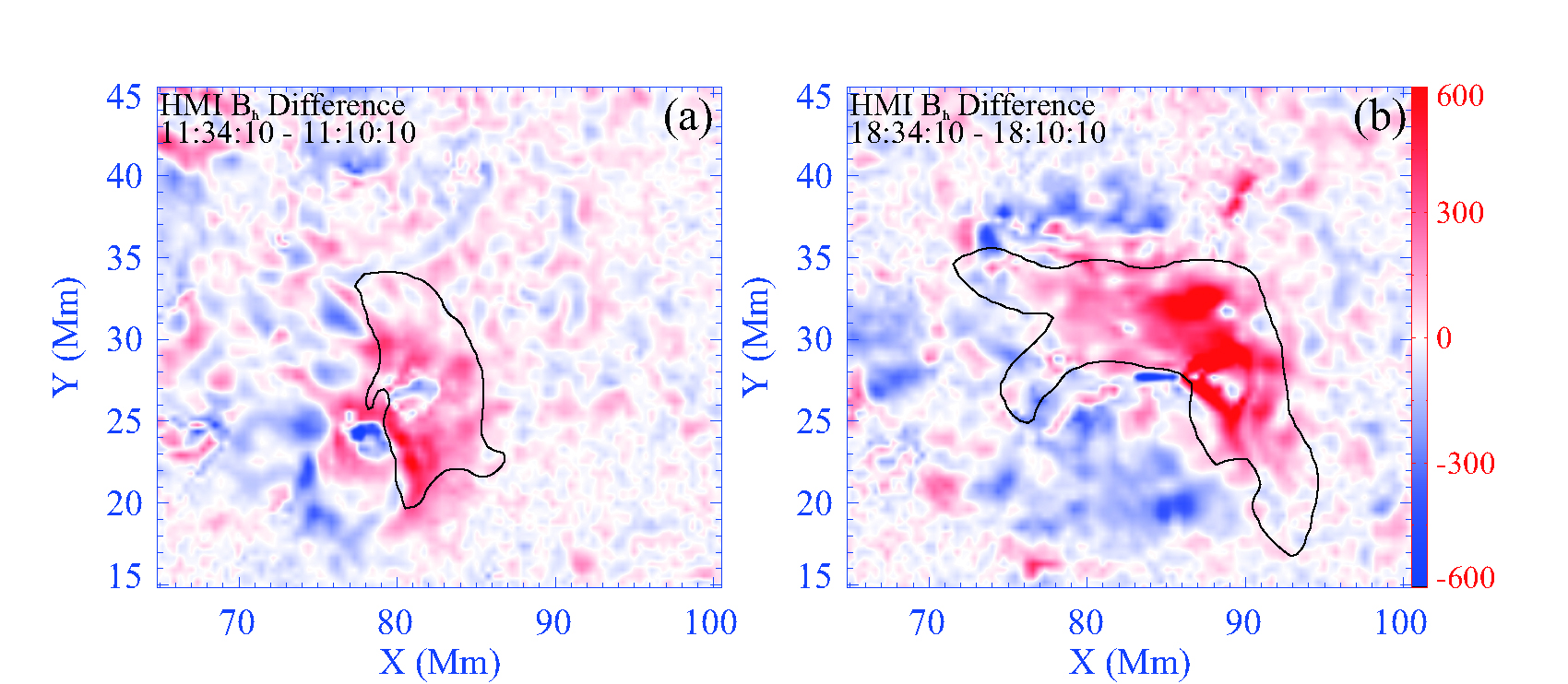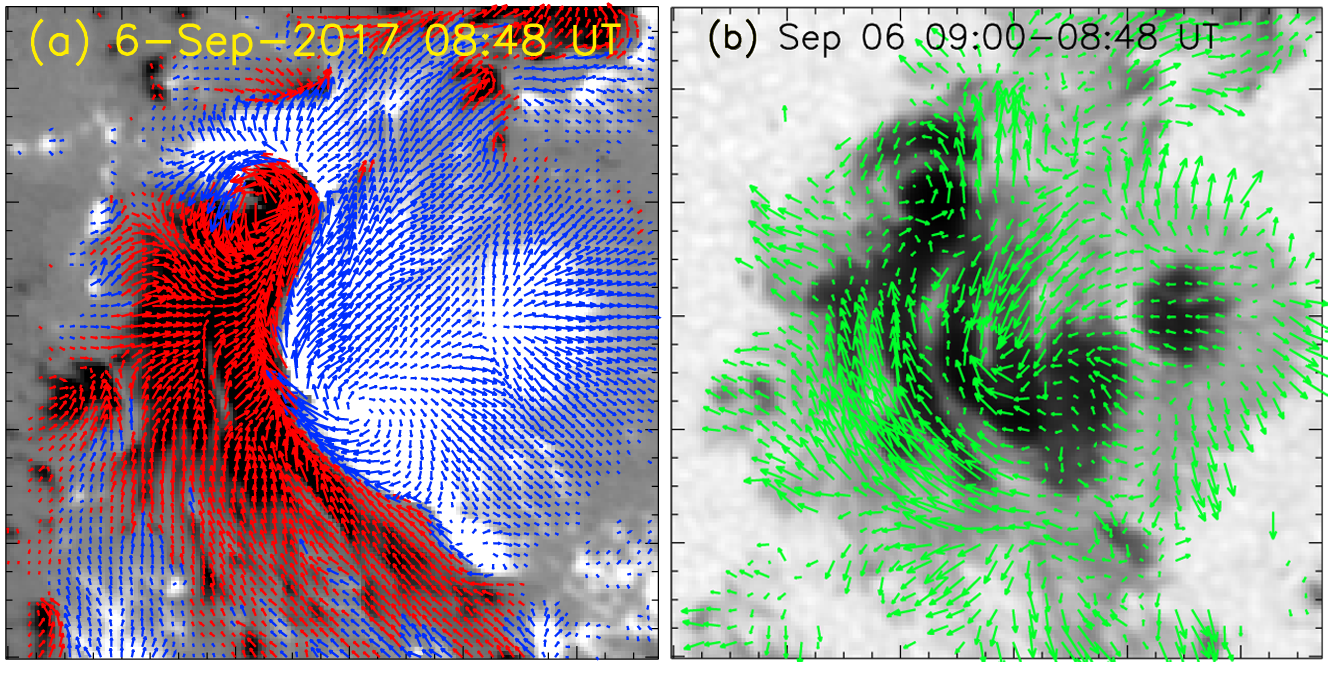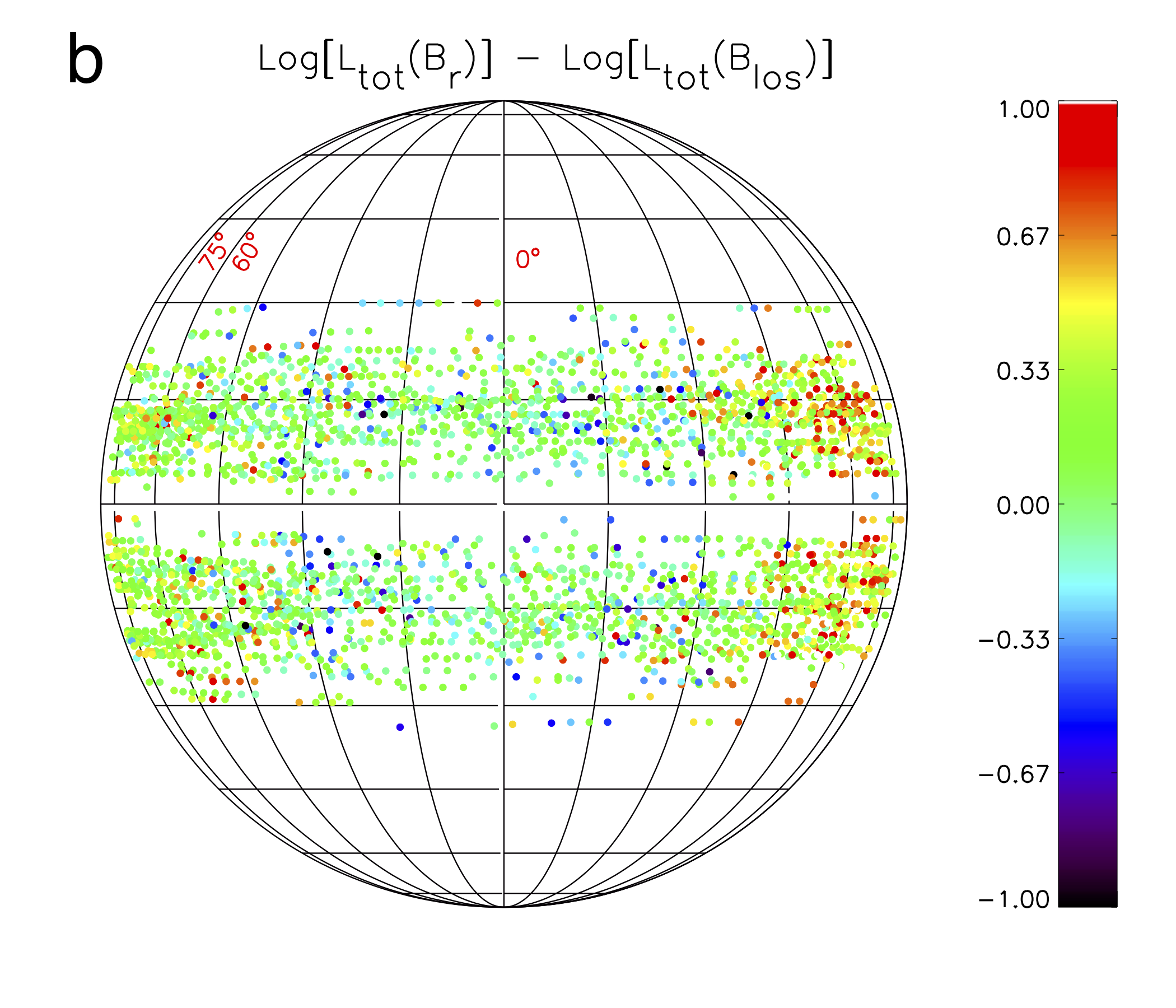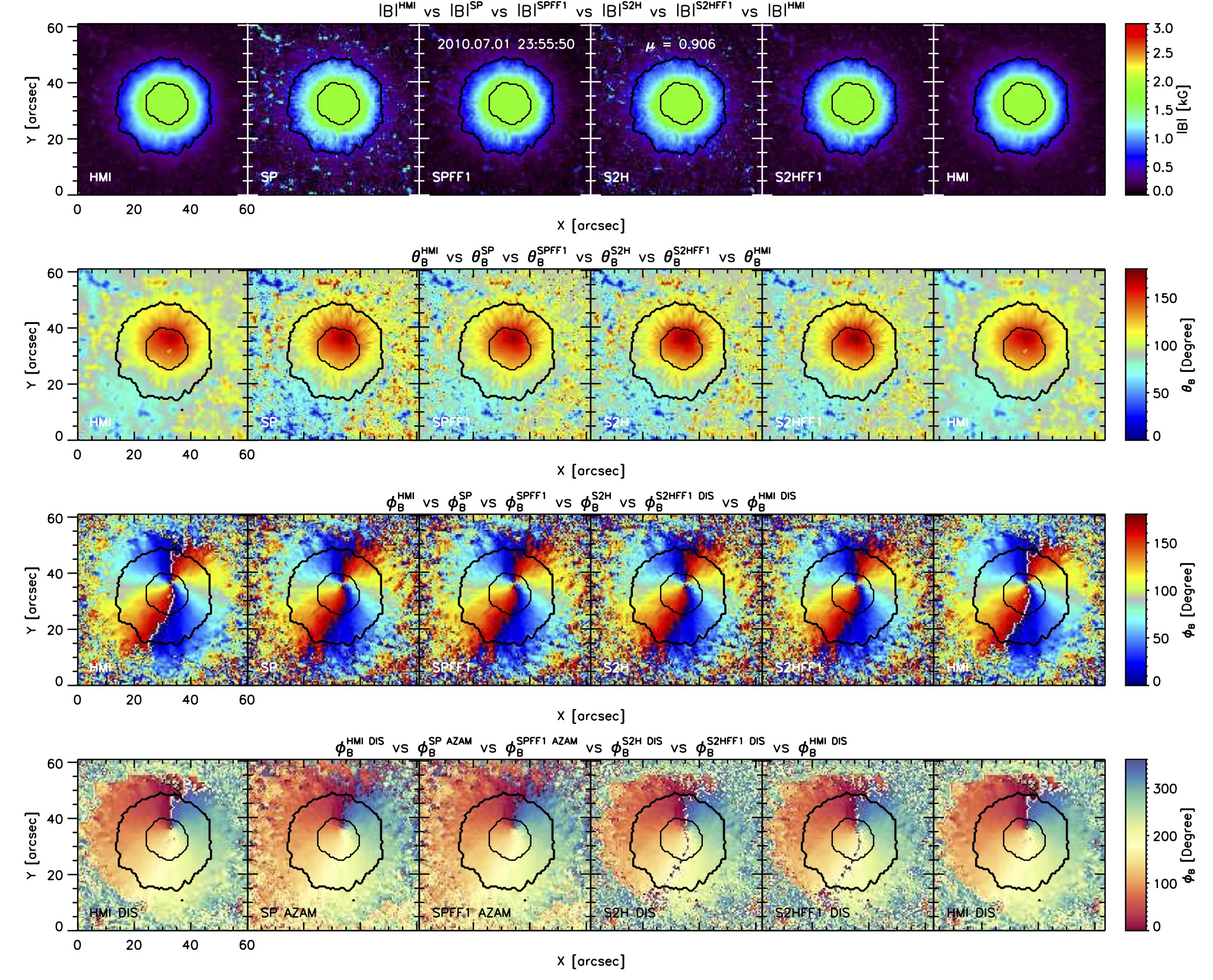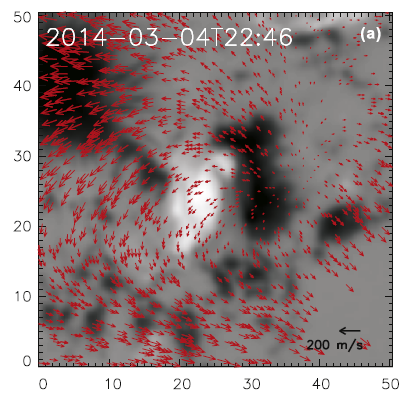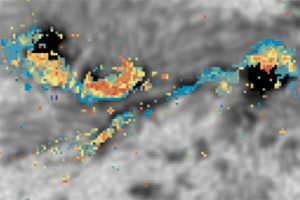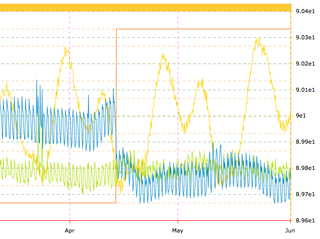120. Magnetic Fields and the Supply of Low-Frequency Acoustic Waves to the Solar Chromosphere
Through analyzing simultaneous HMI’s visible-light observations and AIA’s ultraviolet observations, the authors show that a significant amount of acoustic waves with frequencies lower than the theoretical cutoff frequency can channel up along less inclined magnetic field from the photosphere to the chromosphere.

